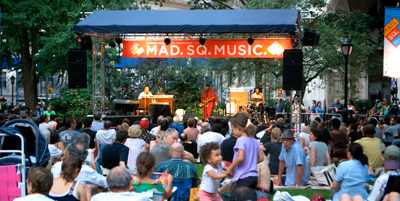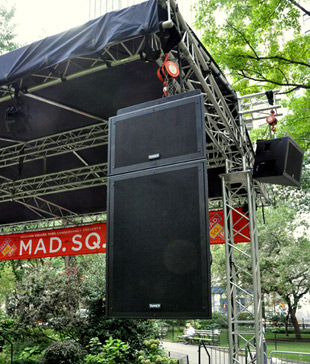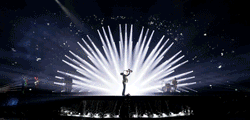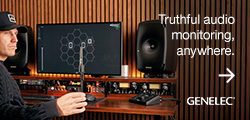The Madison Square Park project
For the Madison Square Park project, Shulman’s job involved wearing a variety of hats; as de facto project manager and designer of the Tannoy-centric FOH and monitor system, and, often, as the house mix engineer. Free concerts in the park feature a handpicked line-up of national touring acts ranging in style from jazz, soul and R&B, to folk, bluegrass and pop. This year’s offerings include jazz pianist Mose Allison, Grammy nominated singer Ruthie Foster, The Wailin’ Jennies and James Carter.
 Prior to its revitalisation in 2001 as a result of the efforts of members of the Campaign for the New Madison Square Park and the city, Madison Square Park was neglected and crime-ridden. Now overseen by the Madison Square Park Conservancy, the park – situated on 6.2 acres between 23rd and 26th streets, and Fifth and Madison – offers cultural activities that include Mad. Sq. Reads, Mad. Sq. Art and Mad. Sq. Kids, which offers various children programs and family art workshops. It has become a thriving community oasis for Manhattan’s Flatiron District and a major destination for visitors to the city attracted to its growing reputation as an important venue for contemporary art, music and literature.
Prior to its revitalisation in 2001 as a result of the efforts of members of the Campaign for the New Madison Square Park and the city, Madison Square Park was neglected and crime-ridden. Now overseen by the Madison Square Park Conservancy, the park – situated on 6.2 acres between 23rd and 26th streets, and Fifth and Madison – offers cultural activities that include Mad. Sq. Reads, Mad. Sq. Art and Mad. Sq. Kids, which offers various children programs and family art workshops. It has become a thriving community oasis for Manhattan’s Flatiron District and a major destination for visitors to the city attracted to its growing reputation as an important venue for contemporary art, music and literature.
In the three years since SIA became involved, the summer series’ infrastructure has increasingly become more integrated. Always, Shulman says, balancing aesthetics and functionality is a key concern. The stage – developed initially for the 2009 season – was designed by SIA and engineered by McLaren Engineering, and incorporates a cantilever roof structure with Milos Truss and an open rear and sides. Supported entirely by in-ground anchors, the structure can support up to 2,400lbs of suspended equipment and withstand wind gusts up to 60mph without the use of guy wires or counterweights. In tandem with a suite of Tannoy VQNet and VNet loudspeakers, the open stage and the system present a compact footprint, allowing audiences to experience the shows without overpowering the surrounding park, or obstructing views of the city’s streetscape and skyline. This is where VQ Series (or the self-powered, networkable VQNet variant as specified in this case) offers a critical advantage over line array systems. That is, its ability to deliver comparable SPLs, with greater broadband coverage control, but with far fewer boxes – minimising the visual impact thanks to the compact point-source modular approach.
First opened as a public park in 1847 and named after former US President, James Madison, the site was once occupied by the nation’s first baseball club, The New York Knickerbockers, and is rumoured to be the birthplace of baseball. It also hosted the nation’s first community Christmas tree in 1912 and, beginning in 1876, played an important role in the history of the Statue of Liberty; temporarily displaying he arm and torch of Manhattan’s favourite lady in an effort to raise funds for the construction of the statue and its base.
Like that historic installation, the stage and systems for Mad Sq. Music are temporary. Shows are held once a week; the Oval Lawn Series, on Wednesdays throughout the summer facing the central Oval Lawn, and on rainy days and Saturdays during the autumn Studio Series, at the park’s south end. At both locations the only physical trace visible between shows are the outline of two rectangular plates, largely hidden by pavers, covering the couplings used to install the stage. ‘It’s like going on tour for the summer,’ Shulman says. Everything, including the stage, is erected on show days, then torn down after the gig and stored off-site in a 24-ft truck. ‘Because of the aggressive single-day show schedule, the structure’s often up before the feeder cable has been run. For events like this, a compact, quickly assembled and straightforward package is needed. The Tannoy VQ arrays remain assembled from show to show; we clip them to the chain hoist, connect a few cables, and they are ready to be flown.’
Part of the reason the park was rescued from longtime neglect was to preserve its distinctive character. Simply put, for this application, your average truck stage with a huge array of speakers hanging off either side would be difficult to set up, strike and store, as well as interfere with the vibe of the park and character of the shows. ‘The typical production elements would not match the nature of these shows – visually or functionally. This fits,’ says Shulman. ‘The design of the stage and system fulfill the production needs, but also maintain the park’s atmosphere.’ Correspondingly it was a necessary to specify a system that provided ample power while preserving that aesthetic. ‘There’s a need for the whole package to fit into that truck and not need racks and racks of amps and DSP. In this situation a self-powered system with onboard processing is very advantageous.’
‘It doesn’t detract or compete with the park,’ adds Maggi Landau, Executive VP of the Madison Square Park Conservancy since 2006. For Landau, working with all the members of the team overseeing and running the series goes well beyond being just a job. It is truly a team united by a shared passion for the project. ‘Working with SIA has been a complete pleasure. They really understood what we wanted to achieve, both sonically and visually. A lot of outdoor concerts have sound systems that sound muddled. Because SIA has fantastic ears and uses extraordinary equipment we were able to achieve a sound quality that surprises people in the music industry – managers, booking agents, record label representatives – when they come to the park for the first time.’
SIA’s exploration of Tannoy is relatively new, based on the firm’s use of Tannoy’s VQNet loudspeakers and a number of their innovative QFlex digitally steerable line arrays in another project – A corporate event staged in the acoustically challenging Paul Hamlyn Hall in the London Royal Opera House in 2009. ‘We’re constantly on the lookout for new, interesting technologies and we noticed Tannoy doing some innovative things, so we explored the QFlex product and that opened the door for further discussion.’
VQNet/VNet
 In addition to all the advantages a self-powered solution offers, the concept behind the VQNet/VNet loudspeakers represents an industry wide shift towards more compact, more functionally powerful components, Shulman believes. ‘As the technology becomes smaller and DSP power grows, we feel strongly that the way things are going, loudspeakers, amplification and DSP should be integrated.’
In addition to all the advantages a self-powered solution offers, the concept behind the VQNet/VNet loudspeakers represents an industry wide shift towards more compact, more functionally powerful components, Shulman believes. ‘As the technology becomes smaller and DSP power grows, we feel strongly that the way things are going, loudspeakers, amplification and DSP should be integrated.’
The intention of the system, in service to SIA’s stated ethic, is to provide a good experience for both artists and audience. ‘Acoustically, the VQ horn has exceptional off-axis performance. That was what sparked our interest initially. When you go to the side the tonality doesn’t change; the top end just rolls off smoothly.’ It’s not a totally different experience for audience members, including many who aren’t watching the show from directly on axis. The transition between various areas also needs to be fluid from a mixing standpoint. ‘If the FOH system has poor off-axis behavior, you will have energy spilling onto the stage that will cause feedback and make the artist feel uncomfortable.’ To obtain maximum low frequency cancellation on stage, four VNet 218DR and one VNet 218DR Live subs are configured on the ground in front of the stage in an ‘expanded cardioid’ configuration.
The system also incorporates nine VNet 12HP loudspeakers – One as a rear fill for the walkway behind the stage and eight as onstage monitors. ‘The requirements for a stage monitor are the same as for a front-of-house loudspeaker: smooth off-axis response, for the musician’s comfort and feedback stability. If they move to the side and the loudspeaker has a radically different response it’s going to be a problem.’ The open stage and rear fill allow passersby not only a view of what’s going on, but an idea of how the show actually sounds, as opposed to the kind of random sonic clutter typically heard when standing backstage at an outdoor show.
At front-of-house, two Tannoy VQNet 100 loudspeakers are coupled with two VQNet MB subs opposite the horn, one array per side. ‘We worked with Tannoy, using GLL loudspeaker data and prediction tools to develop the processing parameters necessary to integrate the MB and VQ modules. This provides improved low-mid pattern control below the horn cut-off, preserving a consistent tonality for even those sitting very close to the stage’ Shulman explains.
Although the venue presents some challenges, they’re a part of what makes the park and this series so unique. The size of the Oval Lawn is substantial and the concerts are popular enough to routinely fill it. ‘We don’t want the experience to be compromised. The expectations are for high-level production, despite the fact that we have an unusually high noise floor and cannot have enormous arrays or delay speakers. This is right on Madison Avenue, where all the M-series buses originate and sit idling. Doing shows, often with acoustic instruments, and having open microphones in that environment has its challenges. Your dynamic range is vastly less than what it would be in a controlled ambient noise environment.’
With all the traffic, sirens and bustle of daily life around the park, Shulman needed a system that provided adequate directivity to cover the 175 ft-long lawn without blowing away listeners up front. ‘The horn does a good job of that in the mid and upper frequencies, but it’s not of a physical size to control the longer wavelengths. So we added another set of the MBs on the other side of the horn to continue that pattern control for several more octaves. In this sort of uncontrolled environment, it’s very difficult to determine crossover settings, so we used Tannoy’s directivity data to see, virtually, what different combinations of processing would yield, and determined the best solution long before the first performance.’
Two Tannoy VQNet 64MHs are also used as side fills to cover the nearly 270° audience area around the stage and are aligned with front facing Tannoy VQ/MB arrays via onboard DSP and Smaart measurement system, as is the rest of the system. ‘The whole rig was predicted thoroughly ahead of time. Then we used measurement and critical listening in the field to objectively confirm that the system was performing as predicted.’
Tannoy VNet USB Interface is employed for system control and Tannoy’s proprietary VNet Software was used for signal processing, in conjunction with an Avid D-Show Profile for control of FOH and monitors. As with Tannoy’s self-powered speakers and onboard DSP, Shulman sees the console as a reflection of a general trend in pro audio with respect to modularity and the leveraging of DSP and plug-in technologies.
A testing ground
For SIA, the annual Madison Square Park series presents more than an opportunity to entertain people. ‘It’s a testing ground where we explore and field-test new technologies and techniques,’ says Shulman, who is also a musician himself. ‘People say ‘you’ve recommended this product or configuration for my venue, but would you mix or perform on this yourself?’ And I can say, ‘Last week I was mixing a show and the week before that I was on stage myself. I understand your position.’ Throughout the course of their involvement SIA has explored not only various loudspeaker types, but also a number of digital networking technologies.
Again, that experience is critical. It’s a matter of achieving a balance between big picture concerns and the details that make all the difference at a live show. The same kind of balance Tannoy applies to the development of its product lines, and an essential component to their ever increasing reputation in the United States as a go-to audio solution for major corporate, sports and entertainment facilities, as well as clubs and concert halls.
While SIA Acoustics offer a variety of production management, product development and consulting services, a substantial portion of their work is design and they take pride in their objectivity when it comes to specifying solutions for clients. ‘It was through an open-minded and impartial process that we came to the Tannoy and the VQ/VNet products,’ Shulman says, ‘for this type of application, they offer a number of very compelling and interesting features. Moreover, we are excited to see where this combination of technology leads.’












